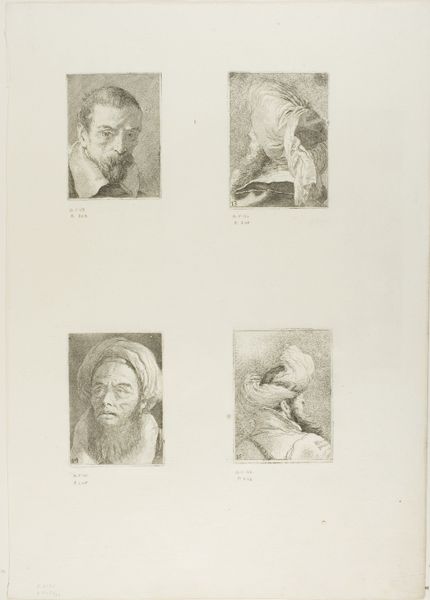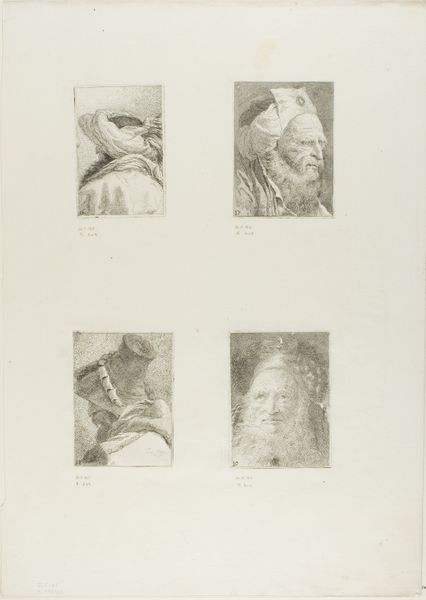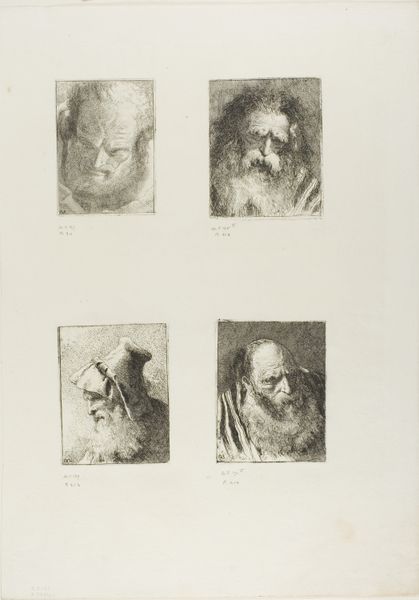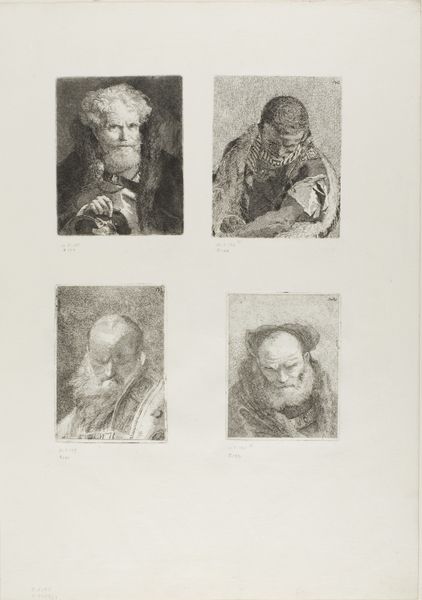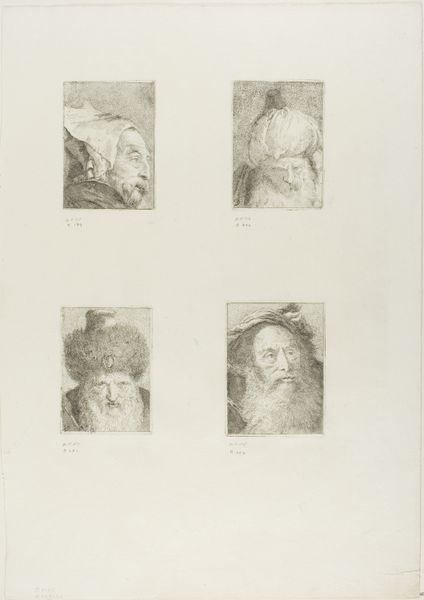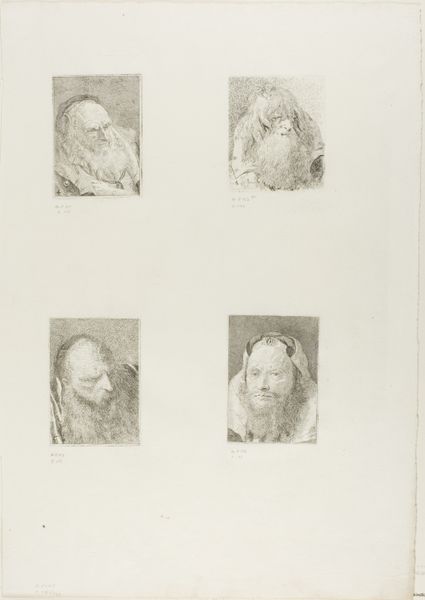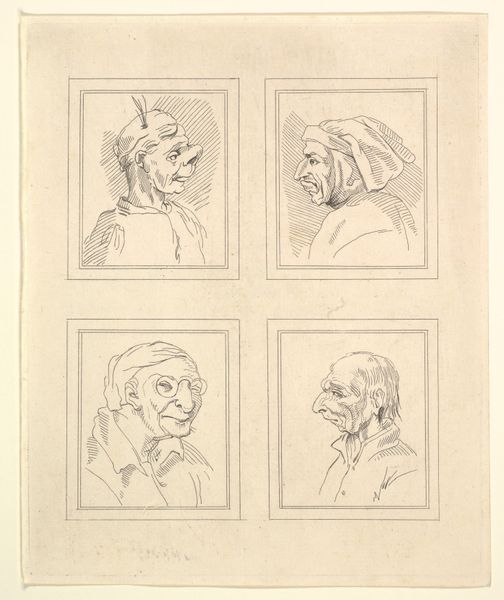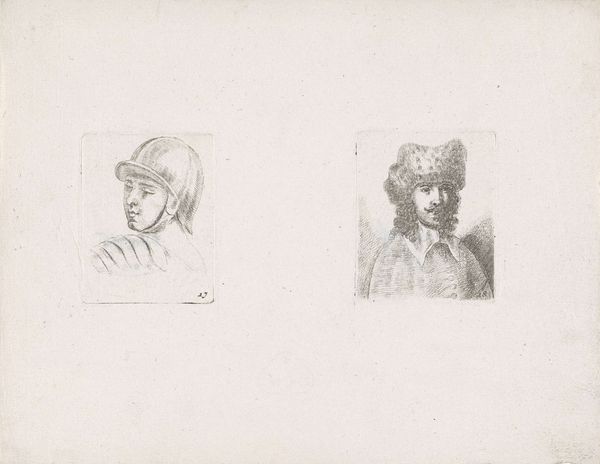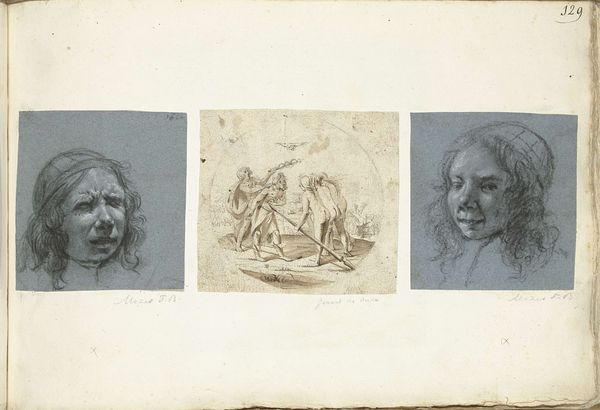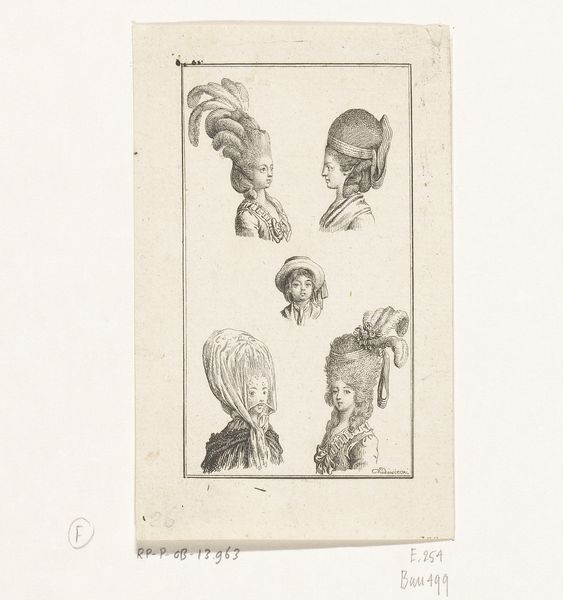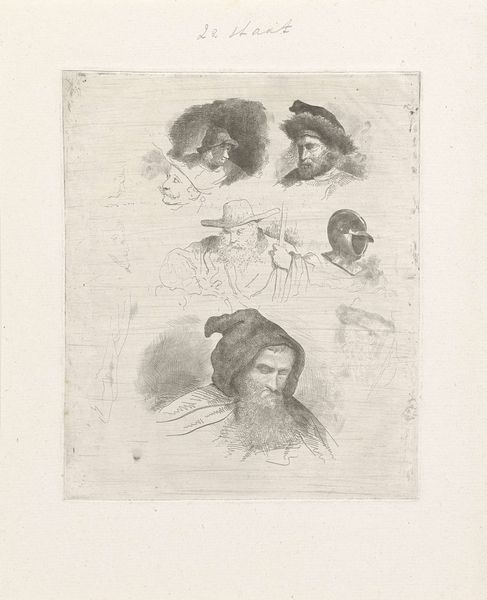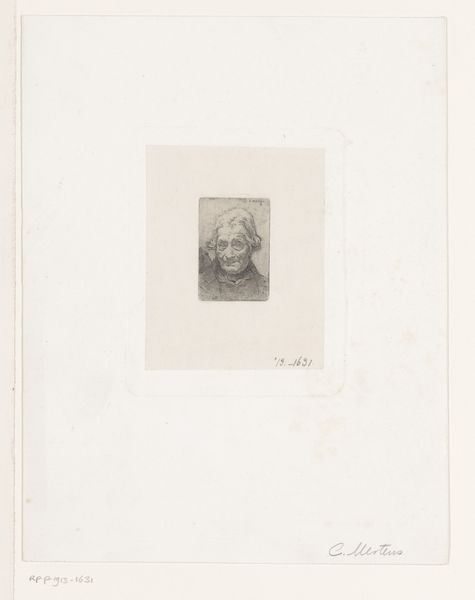
Title Page, Portrait of Giandomenico Tiepolo, Profile of an Old Man, and Old Man with a Turban 1775
0:00
0:00
drawing, print, etching, paper, engraving
#
portrait
#
drawing
# print
#
etching
#
paper
#
italian-renaissance
#
engraving
Dimensions: 123 × 94 mm (image/plate, upper left); 118 × 93 mm (image, upper right); 120 × 96 mm (plate, upper right); 120 × 84 mm (image, lower left); 124 × 87 mm (plate, lower left); 117 × 87 mm (image, lower right); 113 × 82 mm (plate, lower right); 545 × 386 mm (sheet)
Copyright: Public Domain
Curator: Looking at this sheet, "Title Page, Portrait of Giandomenico Tiepolo, Profile of an Old Man, and Old Man with a Turban," created around 1775 by Giovanni Domenico Tiepolo, I'm struck by the starkness. It's an engraving and etching on paper, quite minimalist in its presentation. Editor: My first impression is that the collection of faces creates an almost phrenological feel – a study of types, rather coldly presented, despite the human element. There's a somber quality, especially in the depiction of the older men. Curator: It's interesting you say that. I see a potential reading in terms of class and artistic lineage. This was a self-promotional piece, placing Tiepolo, the son, beside his father’s title and suggesting the inheritance of genius. The older faces could represent a sort of artistic ancestry or lineage of forebearers being channeled. How might gender dynamics be playing into this piece? It strikes me there isn’t a feminine face amongst them. Editor: Precisely. Notice how the men in turbans are particularly potent with visual cues tied to historical dress and assumed intellect through exoticism? The turban acts as a marker of foreigness, perhaps "Eastern" knowledge, a kind of appropriation of intellectual authority via clothing. These are not portraits of equals, they symbolize authority. The lack of female representation is also something that requires more inquiry. Curator: That appropriation, placing different visual symbols side-by-side—portrait, "exotic" types, text establishing lineage—forms a statement about power. It reinforces hierarchies both social and artistic. Editor: The way they gaze, or avert their gaze, even within the tiny etching holds such weight! We interpret meaning simply from where the eye leads. How might audiences understand themselves in relation to this hierarchy when face with an ensemble like this, even centuries later? Curator: The permanence of print only solidifies it, ensuring the visual language, this construction of authority, continues to resonate – a critical point. Thinking about the viewer positioned to consume this, either originally or now, the power dynamics are stark. The absence of female presence creates such imbalance and perpetuation of those gender biases over centuries! Editor: Exactly. Etching captures not only form but these long echoes of intention and cultural projection across time. Looking closely lets us not simply admire its skill but deconstruct power encoded within it, too. Curator: It shows that the images are not passive; they act upon us. They engage us to not simply behold them for what is present, but to evaluate who and why it was included in the image in the first place.
Comments
No comments
Be the first to comment and join the conversation on the ultimate creative platform.
